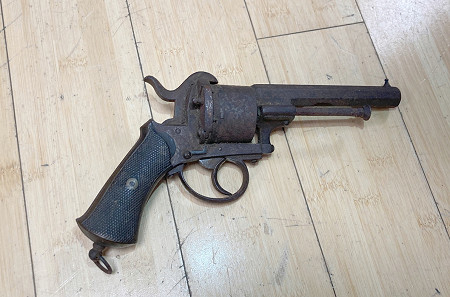Pin fire revolver

Revolver
I am writing a blog post about one of the weapons in Louth Museum. It is labelled F in the weapons cabinet, and is a pin fire revolver with a lanyard ring in the butt. The model shown in the weapons cabinet is most likely of Belgian manufacture sometime between 1850 and 1870.
The revolver is made of a heavy metal. It has six holes around the rear of the cylinder. This was where the pin of each cartridge was located. Some of the cartridges are also in the same cabinet.
The cartridge would have two parts to it, the pin and the main charge. The small pin, when struck with the hammer, would ignite the priming compound and start the firing process. This would set off the main charge which would then fire the bullet.
The rod under the barrel was to eject used casings so the user could load another bullet.
Louth was known as a “hive of gunsmiths”. In a normal Lincolnshire town, it was regular to have 2 gunsmiths, but Louth had 4. This was during the late 19th century.
Weapons of this type were mainly used as a threat or for self-defence.